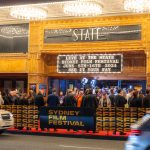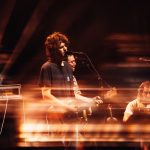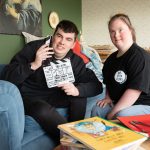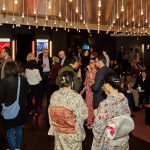In a world flooded with fleeting trends and endless digital noise, sometimes all we crave is somewhere we can lose ourselves in art and music.
Land of Rah is an ever-evolving tapestry of stories, characters, and sonic landscapes that feel like a personal invitation to step through the wardrobe into a realm that’s playful and reminds us to question what is life without art.
It all began with a simple, folky, guitar riff captured on a laptop in 2019, when Julian Hovenden was just 19 years old. A chance creative spark with his friend Hugh gave birth to an entire fictional universe, complete with imaginary festivals, ancient wizards, and chubby children carrying massive pumpkins. Inspired by the richly detailed world-building of Tolkien’s Lord of the Rings, Julian saw the potential to unite every track he composed into one vivid mythos. Since then, the Land of Rah has grown unfolding as a multi-sensory experience that merges music, storytelling, and visual art—ultimately becoming a home for an eclectic group of musicians and creators who share a passion for fun and fantasy.
Irresistible sat down with Julian to talk about how the Land of Rah came to life and the complexities of making art in an algorithm-driven world. While the unexpected viral success of their hit Arevil’s Gardens made very little financially for himself and his musicians, these young artists haven’t lost hope, and remind us how a sense of wonder can sometimes be the greatest tool in an artist’s arsenal.

Let’s start with how Land of Rah came to be?
Julian Hovenden: It was 2019. I was 19, hanging out with my mate Hugh. We were just starting to make music together and wrote this little folky guitar riff. We recorded it on my laptop, and something about it sparked this entire world in our minds. Before we knew it, we’d conjured up a silly story about an overweight kid, a giant pumpkin, and an entire imaginary village with a pumpkin fair. Then we wrote our next track, which was more electronic, and it felt like we’d wandered into a wizard’s lair. By the time we had five songs, we decided to connect them all within one place.
I was obsessed with Lord of the Rings, having read and re-read the books, and watched the films countless times since I was a child. Tolkien dedicated his life to building a single, richly detailed universe, and I thought that was the coolest use of imagination. So, we decided to do the same; create our own realm. I had this vinyl record from an 80s synth-pop band called The Rah Band. I looked up at it and said, “Let’s call it The Land of Rah.”
And that’s how the name came about.
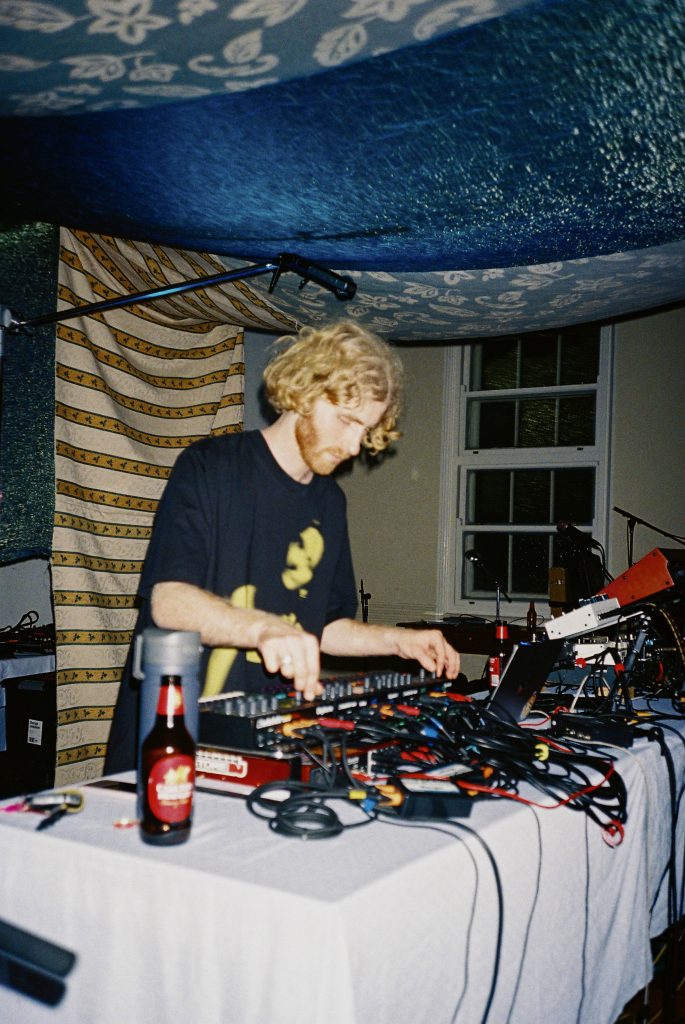
Tell us about what happened with Arevil’s Gardens and how that took off. It’s had over 1.6 million downloads now!
That was during the making of our first album. Hugh came over with these gorgeous guitar chords. He played this riff that’s now pretty well-known, and immediately we knew we had something. I remember tweaking one chord that wasn’t quite right, and suddenly, it felt magical. We decided this had to be the most beautiful place in the Land of Rah, so we drew a little garden on a whiteboard in my room and labelled it Arevil’s Gardens. That was how the track and its setting took shape.
Around that same time, I met Ruby, who came up to me at a bar and said she liked my previous music project. She told me she used to sing in high school and wanted to get back into it, so she came over to my place. She helped shape Arevils Garden’s into what it is now. The whole thing just fell together so naturally, and that’s rare.
We knew it had to be the first single. When it went viral, we were ecstatic—and so young. I was 20 at the time it came out, and it landed on Spotify’s Discover Weekly. COVID had just hit, and I think everyone was bored, and shared it enough to trigger the Spotify algorithm to pick it up and keep recommending it.
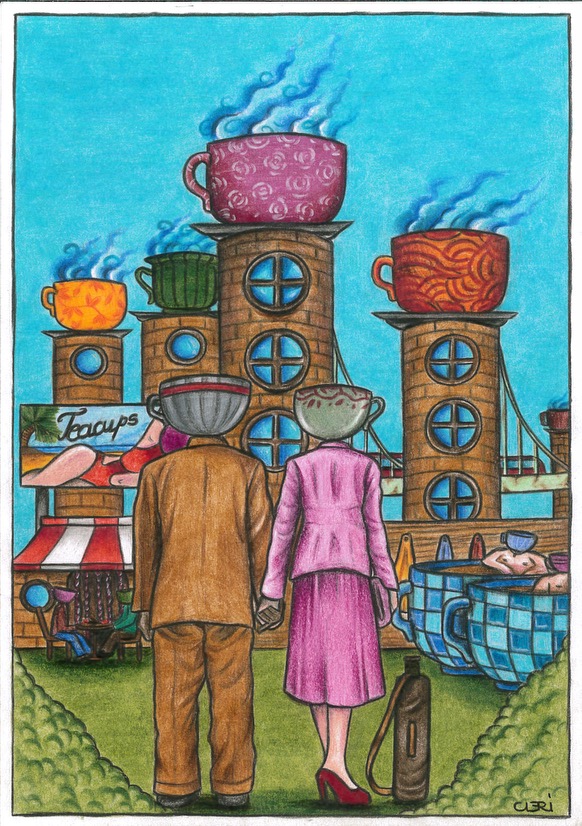
The Land of Rah is a mystical place. What energies or stories from this land shaped your most recent collaboration?
The most recent collaboration is a melting pot of various stories we’ve been writing over the years; some that never found a home, and some newly written. Originally, it was called the Chaos Mixtape, just a collection of disjointed pieces. But as I worked on it, I realised many songs carried deep personal attachments, reflecting moments in my life.
One era of The Land of Rah, the “Third Age,” is quite dark; it’s overrun by “silence monsters” that repress music, imposing a silent regime on everyone. A small rebellion in the south fights back. Maybe that came from the chaos of the world during COVID, or frustration with social media algorithms that control who sees what. Other songs are from moments of pure bliss, so it’s a tapestry of dissonant emotions. As I tried to make sense of it, I wrote bridging tracks that ended up making the album twice as long. Subconsciously, it became a reflection of my life—a journey about patience, though I keep it open to interpretation so listeners can find their own meaning.
When artists come together, there’s usually a track or a live moment that crackles with unexpected magic. You did a sold-out show recently—what happened there?
That show was life-changing for us. There were six of us on stage, and I’m not a technical musician, I’m more of a writer and composer, so I pulled together this team of incredible instrumentalists. We had only one full rehearsal, and a lot of the show was improvised. I was essentially conducting on stage, pointing to musicians and guiding them. Because it was so freeform, it went to places we couldn’t have planned. We had beautiful visuals, lighting, and an old church as the venue—it all came together in this indescribable magic.
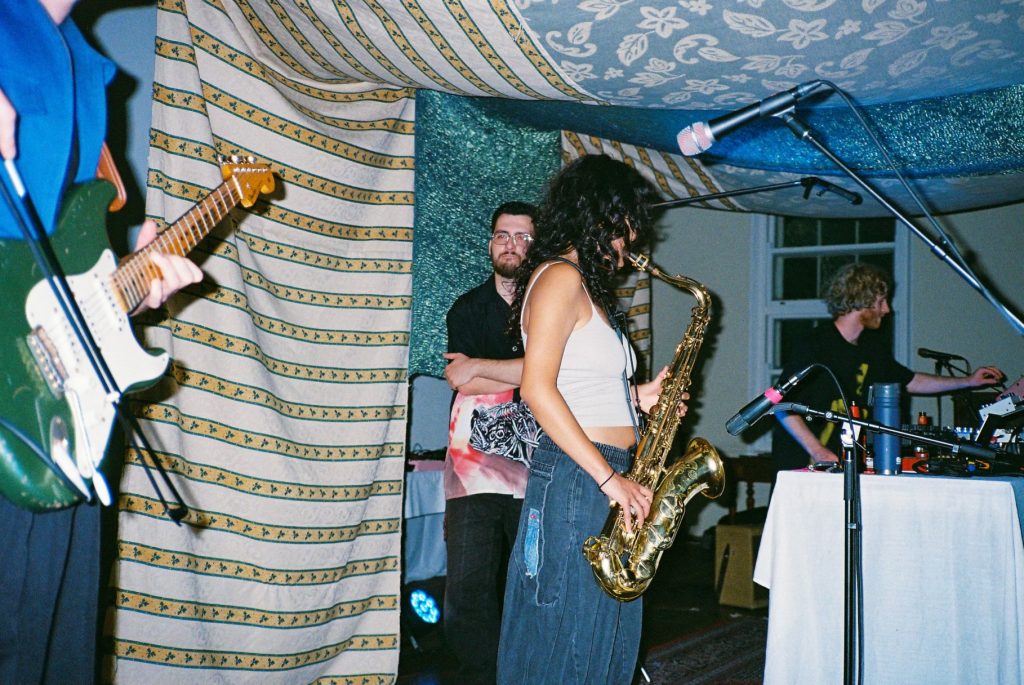
Tell us why you chose the particular space of the beautiful old church?
There’s just something special about this old church, the atmosphere and energy, the artists in residence there. I’d been to ambient gigs there before and joined a choir that rehearsed in the same space. The choir director, Amy (whose artist name is Betty) appears on eight songs of the album, and it helped me form a deeper connection to the venue.
When I heard the building will be demolished, I knew I had to do an event there before it was gone. We put in a huge effort to design the aesthetics, and I think that contributed to the almost otherworldly feel of the night. We’re really just a bunch of people having fun, making nice art and music. Of course, we do reflect on social media chaos and the difficulties of self-expression. But ultimately, our collective is about enjoying the process, and not taking ourselves too seriously.
Tell us more about your latest track, Teacup Town, that you’ve put out with Ruby
Teacup Town is actually five years old. I wrote the instrumental in 2020, and Ruby and I wrote the lyrics together. The story revolves around two siblings from our first album – one was kidnapped – and after they reunite, they visit this whimsical Teacup Town. In real life, Ruby and I wrote a lot of it over Zoom during COVID, when we couldn’t physically be together. So, it’s partly about these characters reuniting, but also about us catching up as friends.
The textures in Teacup Town feel tender and tectonic. How did your collective influence that emotional layering?
Music, for me, is a subconscious process. I’ll fiddle with synthesizers until I find something that resonates with my mood. For this track, I ran a synth into a heavy echo effect while writing—something I usually do more subtly afterwards, but this time it was active during composition. I layered it over and over until it sounded like a big, whooshing wave of whimsical textures. It reflected whatever I was feeling at the time, even if I couldn’t articulate it in words.
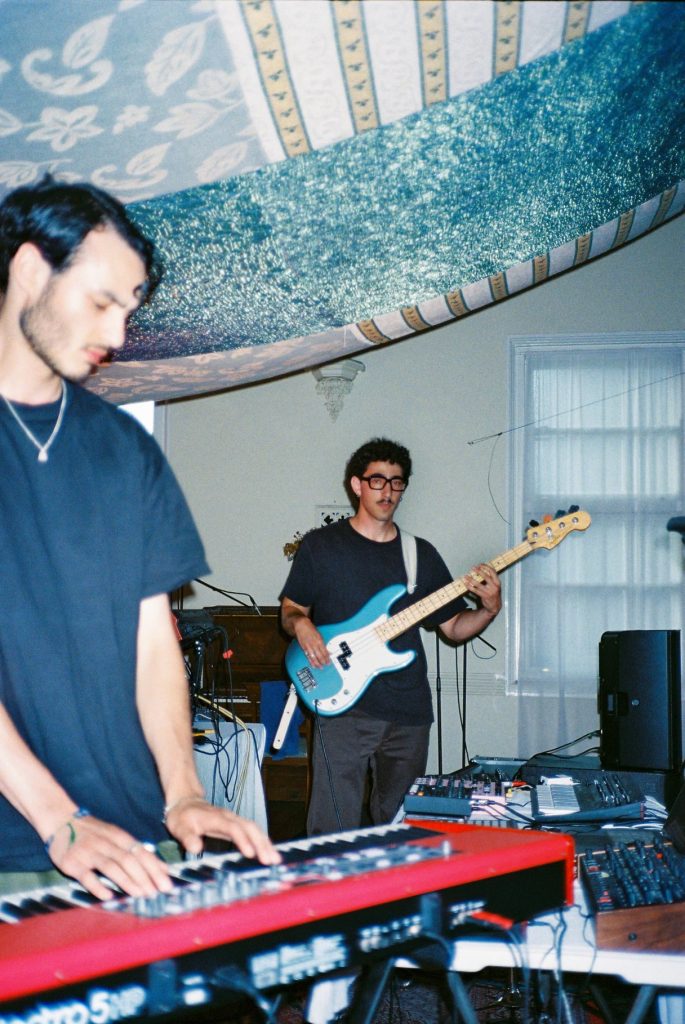
What’s one thing you want your audience to take away from your music when you perform?
I hope they can just enjoy the present and immerse themselves in the moment. Music is about being there, feeling it, and letting it wash over you.
Tell us about your next project. What’s next?
We have an album called Waiting for the Captain, which started as the Chaos Mixtape. It features 22 artists and comes out on May 2. We’re also curating an exhibition with 20 local visual artists who each created a piece inspired by themes from the album. Beyond that, we recorded our sold-out live show. Because so much was improvised, the recording feels like an entirely new album. Hugo’s been mixing it like a madman, and it sounds incredible. Then, we might do another album by the end of the year, if we get a recording grant. I’m itching to get back to creating new music rather than focusing on the social media side.
Artists in Waiting For the Captain- out May 2nd
Julian Hovenden
Ruby foggo
Maury!
Delverb’s Fortune
Betty (@betty.com.au)
Finn Koslowksi
Kurt Lam
Tertia
Hinano fujisaki
Soundsgood choir
Nelson Morgan-August
Hugo Ferrer
Luke Saunders
Anthea Saraikin
Dream fever
Nina Amina Rose
Leo Barry
Felix Dame
Alby Greaves
Hugh France
Max Barwick
Kendal Kim
Maia Toakley
Fergus Martin
Live @ greenhouse studios coming June
Performers:
Hinano fujisaki
Betty
Chris sikiotis
Luke Saunders
Sound engineer:
Nick hatzakos
Stage design:
Jack Conwell
Projections:
Claudia Leonard





